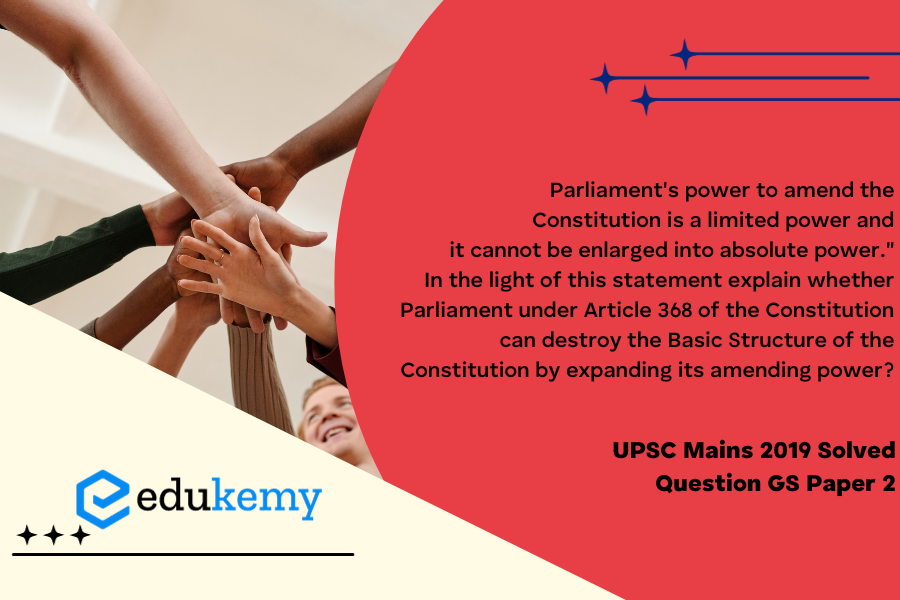The assertion that “Parliament’s power to amend the Constitution is a limited power and it cannot be enlarged into absolute power” underscores a crucial constitutional principle, acknowledging the necessity of circumscribing the amending authority to prevent its misuse. This principle finds expression in Article 368 of the Indian Constitution, which delineates the procedure for constitutional amendments. However, the question arises as to whether Parliament, operating within the confines of Article 368, possesses the authority to dismantle the Basic Structure of the Constitution by expanding its amending power.
Tag: Indian Constitution.
Contents
Decoding the Question:
- In Introduction, try to briefly write about Article 368.
- In Body, discuss basic structure and Parliament’s ability to amend the Constitution.
- In Conclusion, try to end your answer by dragging the question outline.
Answer:
Article 368 of the Indian constitution gives the parliament the power to amend by way of addition, variation or repeal any provision of the constitution in accordance with the procedure laid down by the law. The power to amend the constitution is necessary to overcome the challenges and to meet the demands for the nation’s growth and development.The Parliament at times has breached the constitutional limits by transgressing the areas related to federal structure, and to a certain extent misused Article 368 itself. This is evident from the 25th and 42nd Constitutional Amendment Acts, which has threatened the principle of Constitutionalism.
Basic Structure Doctrine and Limited Powers of Parliament:
- Kesavananda Bharati Case (1973): The Supreme Court held that Parliament’s power to amend the Constitution is limited as it cannot alter the ‘basic structure’ of the Constitution.A limited amending power is one of the basic features of the constitution and, therefore, the limitations on that power cannot be destroyed.
- Minerva Mills v/s Union of India Case (1980): The Supreme Court struck down clauses (4) and (5) of Article 368 inserted by the 42nd Amendment, on the ground that these clauses destroyed the essential feature of the basic structure of the constitution.
- Chandra Kumar v/s Union of India (1997): The judgment held that every provision of the Constitution was open to amendment provided the basic foundation or structure of the Constitution was not damaged or destroyed.

From the various judgments, the following have emerged as ‘basic features of the Constitution:
- Supremacy of the Constitution
- Secular Character of the Constitution
- Federal character of the Constitution
- Unity and integrity of the nation
- The Sovereign, democratic, and republican nature of the Indian polity
- Welfare state (socio-economic justice)
- Judicial review
- Freedom and dignity of the individual
- Parliamentary system
- The separation of powers between the Legislature, the Executive, and the judiciary
- Rule of law etc.
Thus, Parliament is restricted in its power to amend the Constitution so that the soul of the Constitution as envisaged by the founding fathers of India remains intact. It is to be noted that, the doctrine of basic structure does not undermine the legislative competence of the parliament, rather it helps in maintaining the supremacy of the constitution and upholding the constitutional spirit.
In case you still have your doubts, contact us on 9811333901.
For UPSC Prelims Resources, Click here
For Daily Updates and Study Material:
Join our Telegram Channel – Edukemy for IAS
- 1. Learn through Videos – here
- 2. Be Exam Ready by Practicing Daily MCQs – here
- 3. Daily Newsletter – Get all your Current Affairs Covered – here
- 4. Mains Answer Writing Practice – here


